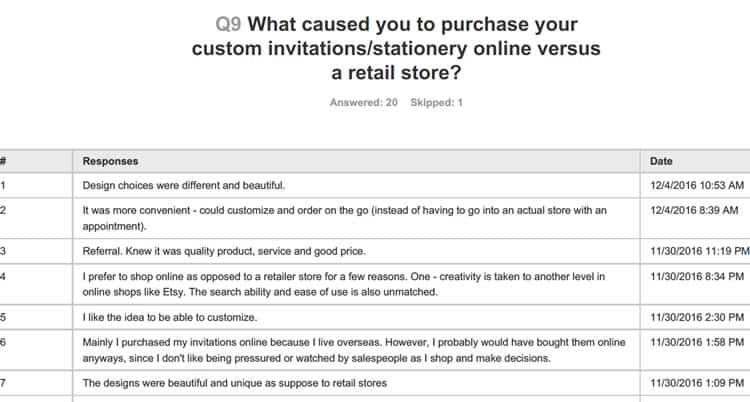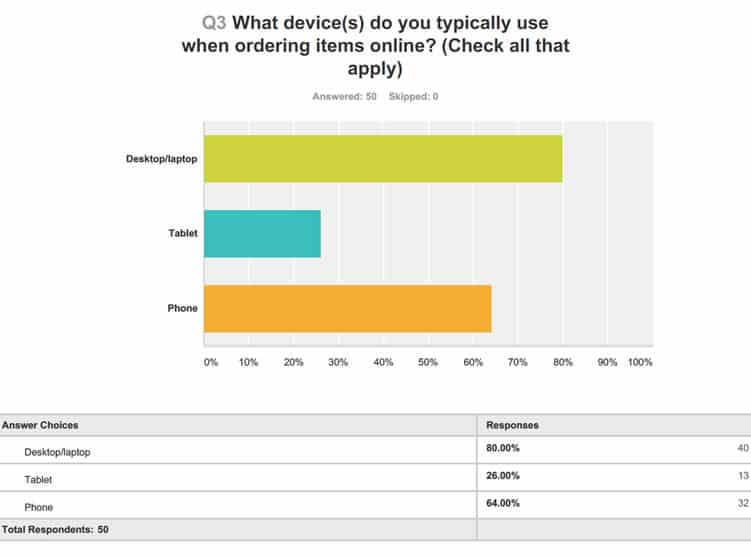Research often gets a bad rap in agencies, especially as far as management is concerned.
Sure, it is easy to assume that research is a waste of valuable budget that could be spent on more valuable things, like design. When designing for stellar usability, however, conducting research is as important as anything else.
Good research will turn into a great design by addressing the specific needs of the target market, and giving users what they want. Without proper research, as a designer, you will not know if you are hitting the goals of the project or designing for the correct demographic.
For every one dollar that is invested in user experience research, it can bring up to one hundred dollars in return.
Working for a UX design agency, I know that some people just do not see the value in research in the design phase. However, I can tell you first hand how important it is to the success of a project. At the company I work for, Codal, we either want to do it right or not do it at all.
While there are hundreds of different research methods for UX and design, in this article, I am going to focus specifically on qualitative and quantitative research methods, and why you may need both or just one over the other.
Qualitative Research in UX
Many UX designers believe that the only difference between qualitative and quantitative research is that the former is an open-ended question, while the latter is not. This distinction does not give the full picture.
A qualitative study typically describes the characteristics of behaviour, such as why and how a sample performs a certain task. Qualitative data generates data around the what, the why, and the how of a particular point of interest.
In-Depth Interviews
There are multiple ways to capture qualitative data; the most prominent ways in UX design are in-depth interviews, surveys, and focus groups.
Here at Codal we find interviews to be the most valuable because of the ability to ask follow-up questions and truly understand their thoughts, opinions, and struggles.
Knowing the why is the insight you need to design a journey that provides the best user experience. Some of the downfalls to this kind of data collection is that it is extremely time-consuming and as a result is difficult to test a large number of subjects.
Task Analysis and Contextual Inquiries
Sometimes, you can even ask the interviewee to undergo a quick test of the platform you are designing.
Understanding a task that a user has to perform is crucial when creating a unique, usable design. Asking the interviewee to complete a few tasks, and observe the journey that they take while completing that task is called Task Analysis and will collect extremely useful data.
Contextual Inquiries are forms of Task Analysis which rely on a predetermined set of questions and goals that place a more defined context on the process. These can be beneficial when the goal is clearer from the start.
Surveys
The below screenshot is an example of a survey that was given out for a project at Codal. Our UX team was trying to figure out why people would want to order something custom versus walking into a retail store to purchase an “out of the box” product.
To assemble the most data possible, we had the opportunity to send out surveys, schedule in-person interviews with some of the survey participants after analysing the survey data.

Qualitative UX research techniques are critical during the design process to gain an understanding of why people are using the platform you are designing.
It can also be helpful to understand any new issues that you may not have thought about. While focus groups and surveys are great, you can gain the most insights when you have one person in front of you, face to face.
Quantitative Research
Qualitative research and quantitative research have the same goal: describe the population in the best possible way. In UX design, the same purpose is present for both forms of research. However, the methodologies differ.
Quantitative research methods are typically trying to answer the how many or how many types of inquiry. Often, it is possible to turn qualitative research into quantitative research by applying it to a large enough sample.
The most important difference between these two forms of research has to do with the reliability of the data. Qualitative research can often provide insights rarely attainable through other means. However, they are difficult to implement in reliable ways.

That is, while qualitative research may provide deep, uncompromising insights into the particular sample that you tested, it is nearly impossible to apply these findings to the population being sampled in the test, unless either an incredibly high number of tests are performed, or a very large sample is taken.
Quantitative data and qualitative data are inherently linked through a two-way street. Qualitative data is nearly useless without being applied in a quantitative manner, and quantitative data cannot exist without qualitative data.
To collect usable quantitative data, our UX team typically aggregates the results of many different methods into a larger pool of results and then cross-checks the findings for each to build up an accurate representation of the target audience.
Our team likes to use several techniques, including card sorting, usability testing (online), and surveys to aggregate large sums of sample data.
Quantitative and Qualitative Research are Two Parts of the Same Process
To adequately have data that represents the real behaviour of an average user, you will likely need a combination of both qualitative and quantitative data.
It is also important to have a large enough sample size. Otherwise, you might not be capturing the data of a potentially real user. Conducting three interviews might be intuitive, but you may not be gathering accurate information.
Utilising trends found in qualitative UX research methods will help establish a foundation for your quantitative research. It is just as important to understand the why and how, as it is to understand the how many and how much. In user experience research, they go hand in hand.
Source: Usability Geek
Author: Jenna Erickson

